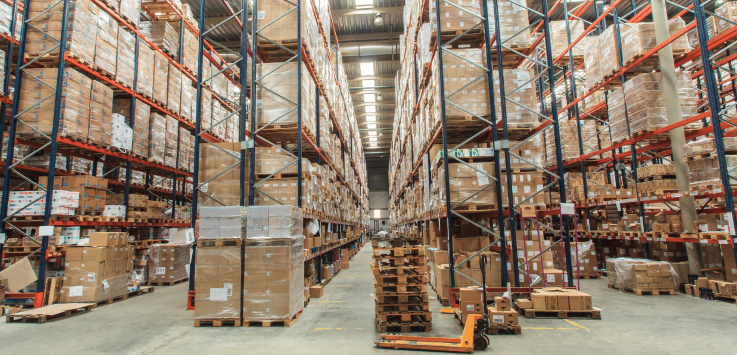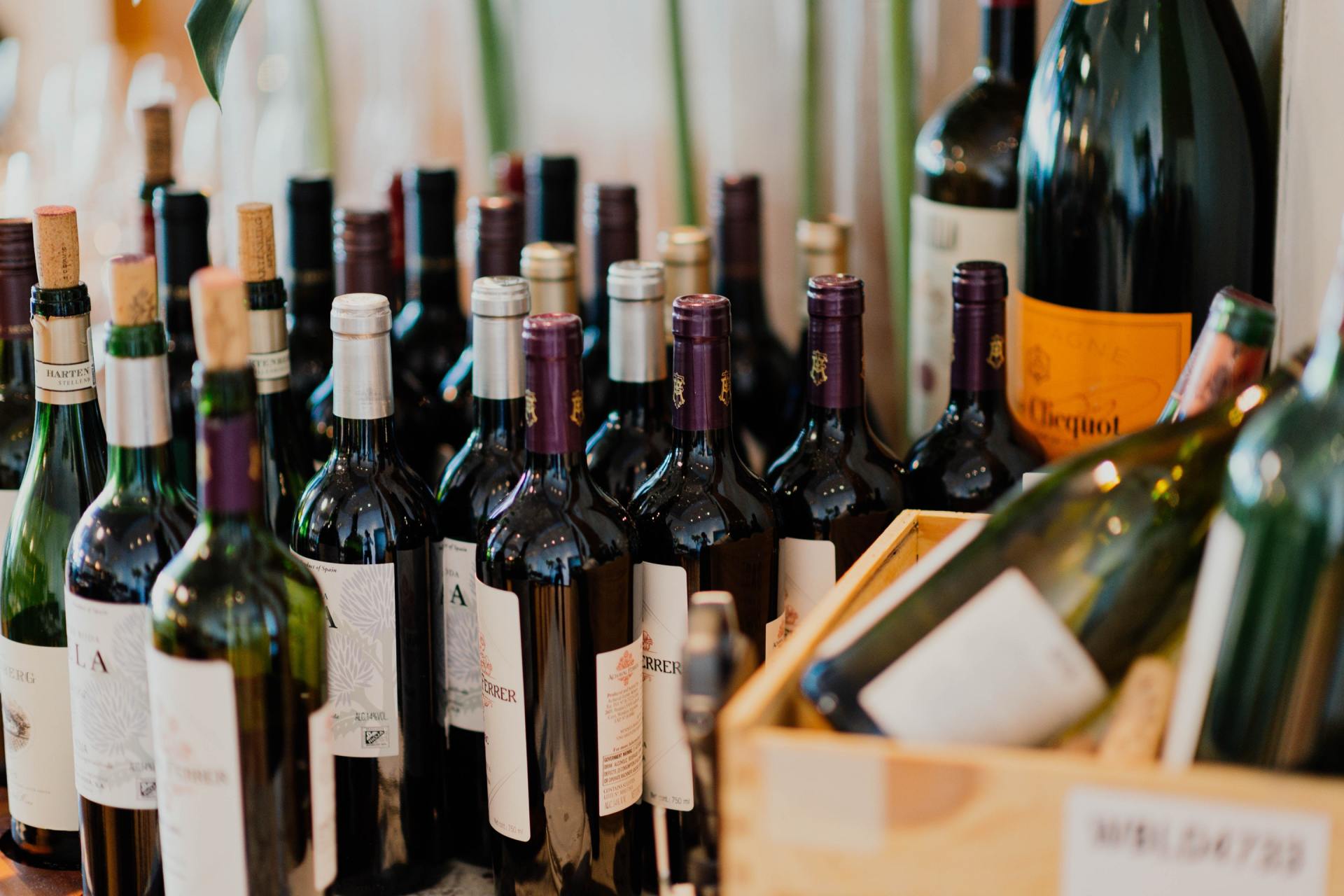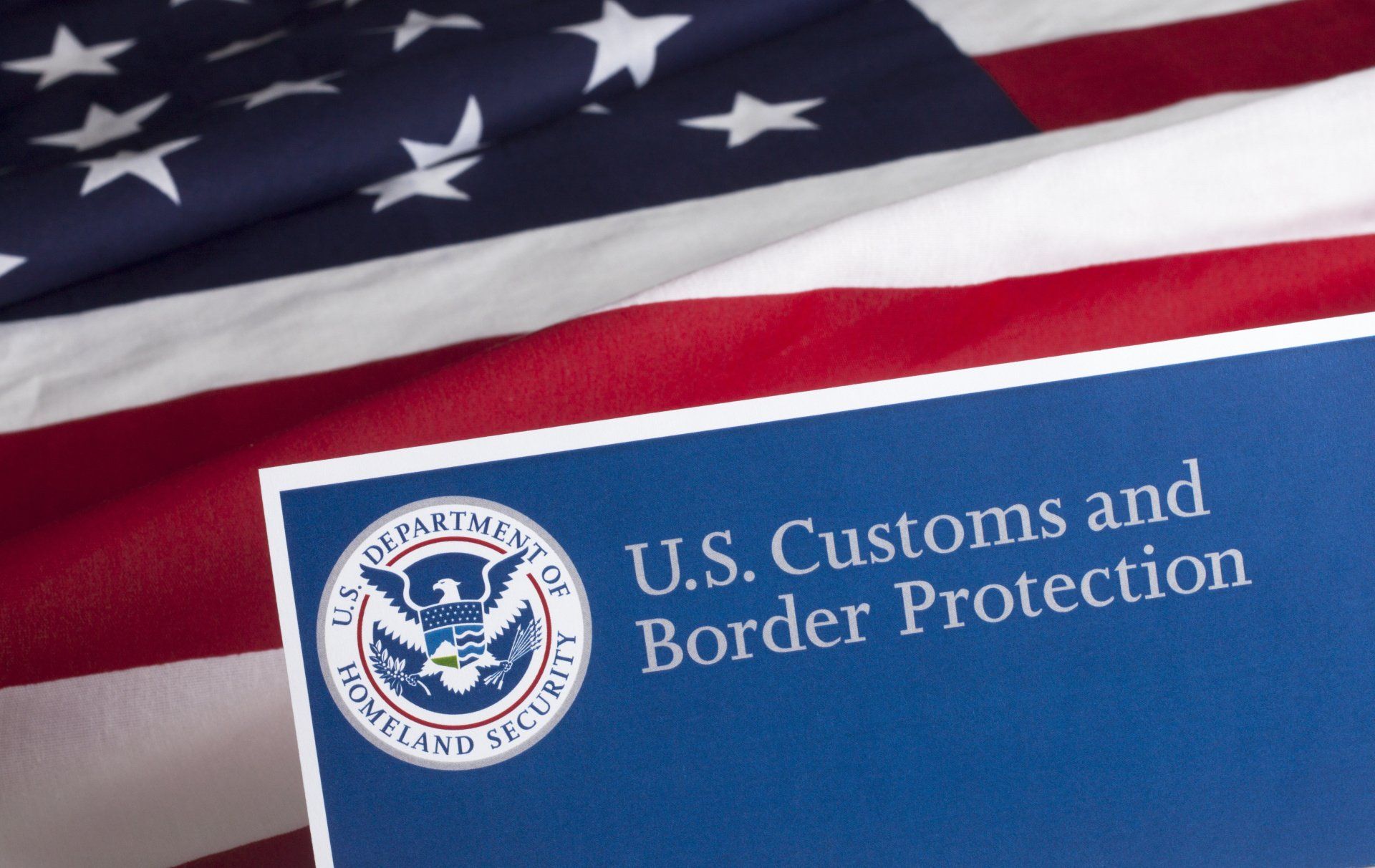Projects and Cast Studies
Since I founded ICS Global, I've been involved in a number of projects. These case studies provide you with an in-depth look into how those projects were completed and what was involved in the processes to ensure completion, breaking them down into the challenges I faced and how I worked to overcome them. Through these case studies, you can see the direct results of the work I produced.

Warehousing Solution in China for a Components Manufacturer
The Challenge
The Client is a components manufacturer based in the USA and Europe, supplying product to Original Equipment Manufacturers (OEM's) based in China. With a large international customer base in China, they were looking for the following international supply chain solutions within China:
- A local presence and local customer service solutions.
- Local bespoke warehouse solutions, which would allow them to meet their Customer’s needs.
- The ability to store inventory sourced from the USA, Taiwan, India and China locally in China, therefore reducing delivery lead-times.
- The flexibility to avoid investing in ‘bricks and mortar’ within China.
The Solution
The solution was to setup 3PL / 4PL bonded warehouses within Bonded Logistics Parks (BLPs) in Shanghai and Shenzhen. BLPs have been setup in China to help the development of a modern logistics industry and to expand the functions of bonded areas. The parks enjoy preferential policies that apply to bonded areas and export processing zones. Enterprises also benefit from other special regulatory areas, such as bonded ports and bonded logistics centres.
The main BLPs are at Shanghai, Shenzhen, Tianjin, Guangzhou, Dalian, Haikou, Zhangjiagang, Fuzhou, Ningbo, Qingdao, Xiamen, Shantou and Zhuhai. These bonded areas are not true Free Trade Zones (FTZ), but special areas that enjoy taxation benefits by being “within China but outside the Customs”. In other words, the goods are on Chinese soil, but not imported into China.
The Official Benefits of a BLP are:
- Goods coming into the BLPs from enterprises outside the parks are deemed as for export, and export VAT refund can be applied.
- Goods within the BLPs can be circulated freely and no value-added tax and consumption tax is paid.
- Goods going out of the bonded logistics parks to China are deemed as imports. They are to be declared to the Customs by the enterprises within or outside of the parks and are subject to tax or exempted from tax, depending on the arrangement
The Results
Benefit 1
• Goods coming domestically into the BLPs from outside the parks are treated as export and go through export declaration formalities.
• Goods coming into the BLPs from outside China are bonded.
This was a good fit with the Client’s business model because the Client will not pay local taxes or duty on imported goods until the goods are despatched from the BLP warehouse to the customer’s Chinese factory.
Benefit 2
BLPs are operated by 3rd Parties, such as the Client’s freight forwarding partner. This was a good fit with the Client’s business model because:
• The Client will not be required to invest in ‘bricks and mortar’ within China.
• The Client already has an integrated working relationship with their freight forwarding partner, which included inventory solutions.
Benefit 3
Imported or domestic goods can be taken into the bonded logistics parks for assembling, packing and storage, and then shipped to the Customer’s Chinese factory when required or to other countries, such as the USA or Canada. This was a good fit with the Client’s business model because:
• The Client can replicate the activities of their operations in the USA and Europe.
• The Client’s vendors can deliver products into the BLP for both the Customer’s Chinese factory and for their North American business. The BLP would then sort, store, consolidate and ship accordingly.
Benefit 4
Domestic goods can be taken into the BLPs for assembling, pick & pack, storage and simple processing, and then distributed to domestic or overseas markets depending on the demand in the marketplace. This was a good fit with the Client’s business model because products sourced domestically can be taken into the BLP warehouse and processed as they are at the USA and European sites. The Chinese vendor will get their VAT refund at that point. However, when shipping any goods from the BLP warehouse to the Client’s customer’s Chinese factory, all documentation (packing lists, invoicing, etc.) will be in the name of the Client. Therefore, the end customer will have no visibility of the Client’s Chinese vendors.
Benefit 5
Imported goods or Chinese domestic goods can be taken into the BLPs for assembling, pick & pack, storage and simple processing, and then sold to Customer’s Chinese factory or overseas markets depending on the demand in the marketplace. This was a good fit with the Client’s business model because product can be sourced from multiple countries (China, Taiwan, India, USA, etc.), shipped into the BLP warehouse and packed together to meet the Customer’s needs.
Client testimonial
"Ian’s thorough understanding of different countries processes, best practices, warehousing and relevant laws accelerated our learning curve as we expanded our international infrastructure. As a result, we were able to avoid many of the expensive learnings that companies can experience."
Vice President

Importing Vaccines into the USA prior to the Annual Strain Approval
The Challenge
The Client was importing vaccines into the USA for further processing, filling into syringes, labelling, packing and warehouse storage prior to the U.S. Food and Drug Administration (FDA) annual strain change approval. The Center for Biologics Evaluation and Research (CBER) and the FDA were insisting that the Client complied with two different import processes, which resulted in up to 30 days of production delays. These delays were impacting sales into the U.S. market, due to late release of products following the to the annual strain change approval.
The Solution
I prepared and submitted a detailed argument to challenge the FDA and CBER import requirements, which were contradictory and not in accordance with the regulations stated in the U.S. Federal Register.
The importer is required to make an application for ‘Request for Authorization to Relabel or Perform Other Acts’ by either letter or by the FDA Form 766 process under the U.S. Code of Federal Regulations Title 21 Food and Drugs, Chapter l, Part 1, Subpart E – Import and Exports. Therefore, as the Client had a CBER response to their letter stating that CBER did not object to the importation of vaccine, there was no requirement to follow the lengthy FDA Form 766 process which delayed production by up to 30 days.
The Results
Further to presentations and detailed discussions, the following statements were issued:
• CBER stated ‘For the 2019-2020 Influenza Vaccine Import Requests, we are no longer requesting that importers submit FDA Form 766’.
• The FDA stated ‘They did not object to shipments travelling to the consignee under bond for commencement of the activities described in the Import Request accepted by CBER’.
The acceptance of a new fully compliant end-to-end process by the FDA and CBER reduced clearance times, removed unnecessary documentation and administration, and increased sales due to earlier product release to the U.S. market.
Client testimonial
‘This is fantastic news and will have a dramatic effect on our throughput compared to the previous couple of years. Well done for driving the request for improvement in this process’.
Global Head of Manufacturing and Operations

Award-winning Specialist Importer of Wines from Argentina
The Challenge
Las Bodegas Limited is an award-winning specialist importer of wines from Argentina, France and Spain, and was established by ex-Board Directors of Safeway Plc. Las Bodegas Limited supplied wines to most of the UK grocery industry and several retail organisations within Europe.
The Client required end-to-end international supply chain solutions from the wine producers in Argentina to their end customers in the UK and Europe.
The Solution
I designed a multi-channel global distribution solution, which included international sea freight, sea container optimisation, import / export customs clearance, duty and tax management, bonded warehousing solutions and local truck deliveries to the end customer.
The Results
• Due to limited resources to manage their business activities, Las Bodegas outsourced their international distribution, import / export activities and deliveries to their retail customers within the UK and Spain to my company.
• I developed and implemented a fully HM Customs & Excise compliant CFSP solution for Customs / Excise Bonded Warehousing with Warehouse Management Systems for Las Bodegas wine imports from South America, resulting in reduced duty exposure and increased cash flow.
• I provided import / export customs clearance / brokerage services.
• I implemented Warehouse Management Systems to manage the stock flows.
Client testimonial
‘Ian is a true expert on international logistics and was instrumental in the success of Las Bodegas when I started it. His understanding of duties and the rules and laws in those areas are, in my experience, without compare. He also knows the right people to talk to and has excellent connections in the logistics industry. He is also good at getting things done meaning you don’t have to worry and chase up - very reliable’.
Founder of Las Bodegas

Reducing Customs Clearance Delays
The Challenge
The company is a large importer of industrial products into the USA, with exports to customers globally. U.S. Customs and Border Protection (CBP) were regularly targeting their direct imports by sea freight from China into the U.S. west coast ports for Intensive Examinations. This type of customs examination requires the transfer of the sea containers to a Centralized Examination Station (CES) or Customs-bonded facility and the process was resulting in supply chain delays of 3 to 21 days. The delays had a financial implication, due to demurrage and detention charges by the shipping lines for late return of the empty containers.
The company were looking for the following international supply chain solutions:
1. A reduction in the number of Intensive Examinations by CBP
2. A reduction in the number of other examinations by CBP, such as Manifest Holds and VACIS Examinations.
3. A reduction of demurrage and detention charges from the shipping lines.
4. A certification of the import and export supply chains to meet the compliance requirements of major customers within the USA and overseas.
The Phase 1 Solution
The first phase was to audit all import documentation and identify incomplete, late or missing documents, such as commercial invoices, shipping invoices, packing lists, certificates and bills of lading. Incomplete, late or missing documents can trigger a hold and inspection by CBP. Following the audit, I implemented a scope of work to introduce complete and accurate document packs. In advance of each shipment, the document pack became available for the freight forwarder and this complied with the new Importer Security Filing, ISF (10+2) that became mandatory at the same time.
In advance of each shipment arriving at the U.S. port, the U.S. Customs Broker received a document pack for clearance formalities, therefore avoiding clearance delays due to late documents.
The audit identified that product classification for customs clearance purposes was not always accurate. I implemented a scope of work to classify products with the correct Harmonized Tariff Schedule (HTS) Codes and a meaningful product description. Subsequently, relevant shipping documents included the correct product descriptions and HTS codes.
In addition, I audited international supply chain partners to identify those associated with previous problem shipments and/or violations of U.S. regulations. The audits also identified poor performing partners within the supply chain. Following the audit, I appointed a new reliable Freight Forwarder for the China-U.S. route and a new U.S. Customer Broker to provide clearance formalities.
I also applied for a Continuous Entry Bond with CBP to help expedite shipments and further reduce the risk of examinations.
The Result
These new measures reduced customs clearance delays, customs examinations, customs fees, demurrage and detention charges and, in some cases, reduced customs duty payments.
The Phase 2 Solution
The measures implemented in Phase 1 had dramatically reduced the number customs examinations, but the number of shipments targeted for customs examinations was still slightly above the national average. With CBP frequency increasing the number of shipments they target for customs examinations following 9/11, this further affected matters. Unfortunately, customs examinations have become part of the reality of shipping goods in and out of the U.S.
The company was looking for a further reduction in the number of Customs examinations by CBP and a certification of the import and export supply chains to meet the compliance requirements of major customers within the USA and overseas. As the company was also shipping large amounts of goods, it was a good strategy to become a Customs Trade Partnership Against Terrorism (CTPAT) member with CBP.
CBP describe CTPAT as ‘one layer in U.S. Customs and Border Protection’s (CBP) multi-layered cargo enforcement strategy. Through this program, CBP works with the trade community to strengthen international supply chains and improve United States border security. CTPAT is a voluntary public-private sector partnership program which recognizes that CBP can provide the highest level of cargo security only through close cooperation with the principle stakeholders of the international supply chain such as importers, carriers, consolidators, licensed customs brokers, and manufacturers. The Security and Accountability for Every Port Act of 2006 provided a statutory framework for the CTPAT program and imposed strict program oversight requirements.’
I implemented C-TPAT for the company, which involved working with CBP to protect the end-to-end international supply chain, removing security gaps, implementing security measures and best practices. With my assistance, the company had to address a number of security topics across all business activities and partners within the international supply chain. As part of best practices, I produced an Import Manual, an Export Manual and a Shipping Operations Manual. In addition, I presented security profiles that listed action plans to align security throughout the supply chain.
C-TPAT Tier 1
The company’s application to join the program received approval.
C-TPAT Tier 2
The company received validation of the application within 6 months and awarded Tier 2 certification. The validation process involved myself auditing a distribution centre in the USA with CBP Officers observing and taking CBP Officers to Asia to observe my CTPAT auditing of a major manufacturing site, which supplied products to the company.
The Result
These new measures considerably further reduced customs clearance delays, customs examinations, customs fees and demurrage / detention charges. The CTPAT Tier 2 status also gave the company the certification of their import and export supply chains to meet the compliance requirements of major customers within the USA and overseas.
The Phase 3 Solution
Working with the company to obtain CTPAT Tier 2, I implemented several new procedures which exceeded the requirements of CTPAT and made the end-to-end international supply chain more efficient. CTPAT Tier 3 is the highest level of CTPAT certification awarded to fully certified, validated CTPAT partners who exceed the minimum standards. Therefore, I applied for CTPAT Tier 3 certification. The validation process involved myself once again taking CBP Officers to Asia to observe my C-TPAT auditing of another major manufacturing site, which supplied products to the company. Tier 3 certification was given to the company to cover their import and export supply chains.
The Result
The various measures implemented removed multi-million dollar supply chain costs per year. These additional new measures gave the company "green lane" customs treatment with no or infrequent customs examinations. In cases where containers were picked for examination, they received priority and were moved to the front of the examination line.
As security partnership arrangements like C-TPAT are called Authorised Economic Operator (AEO) programs, the company was able to make use of “mutual recognition agreements”. Many countries with AEO programs, including the U.S have signed “mutual recognition agreements” whereby multiple countries customs authorities agree to recognize the AEO authorization and provide reciprocal benefits to companies.
Testimonial
"We were impressed with the detailed and extensive procedures which your U.S. businesses have implemented, at Ian’s direction. This is a significant validation of the six years of efforts by Ian to establish a comprehensive import compliance program."
U.S. Customs and Border Protection Officer

